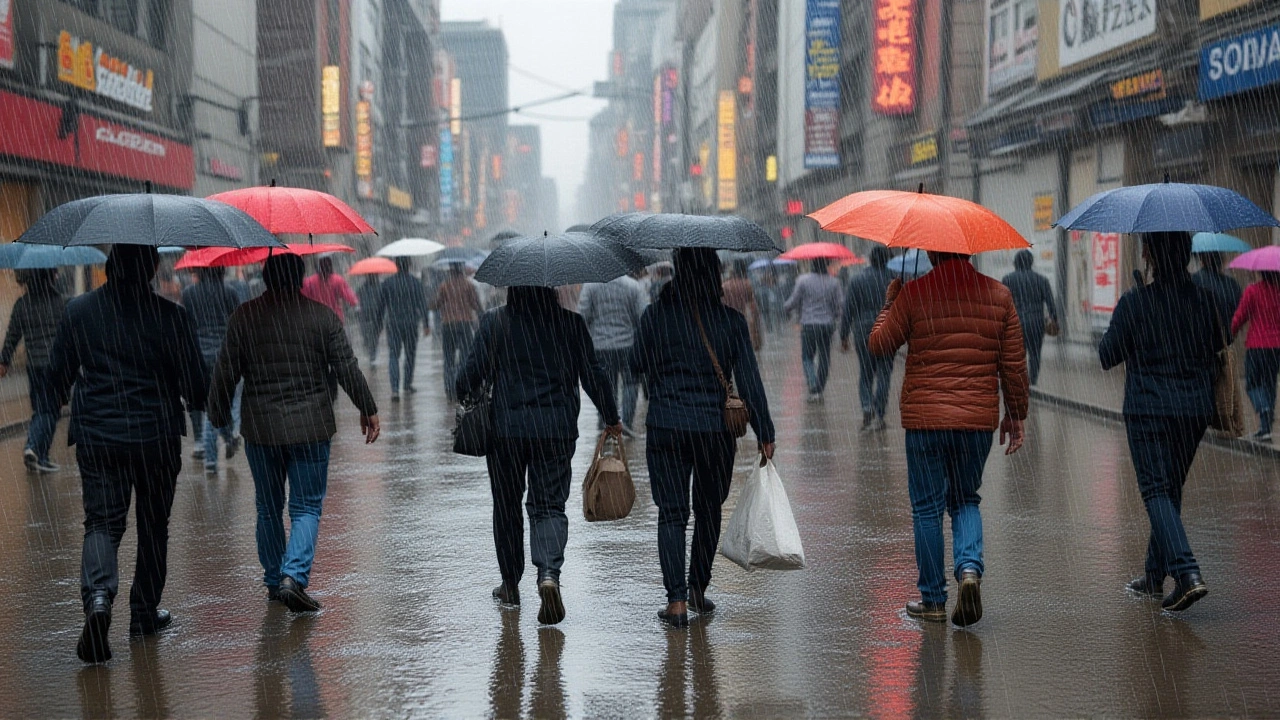Kenya Meteorological Dept warns of 7‑day heavy rain across five regions
Kenya's Meteorological Department warns of heavy rain from Sep 30 to Oct 6 across five regions, with extreme temperature swings and flood risks, prompting urgent prep advice.
Heavy rain has turned parts of Kenya into a watery mess. Roads are flooded, homes are threatened, and farmers are scrambling to save crops. If you live in the affected areas or plan to travel through them, you need clear, practical info right now.
Scientists point to a mix of climate patterns: a strong Indian Ocean dipole and an early‑season South Asian monsoon. When these systems line up, moist air rushes inland, dumping more water than usual. In Kenya’s highlands and coastal belt, this translates into continuous downpours that quickly turn dry streams into raging rivers.
Roads: Major highways like the Nairobi‑Mombasa corridor are experiencing water‑logged sections. Expect delays, detours, and occasional road closures. If you must drive, keep headlights on, avoid standing water, and stay updated via local traffic apps.
Homes: Low‑lying neighborhoods in Kisumu, Nakuru and parts of Nairobi report water entering basements and ground‑floor rooms. Move valuables to higher ground, sandbag doors, and keep a flashlight handy in case of power loss.
Agriculture: Small‑scale farmers are seeing fields flooded before seedlings can establish. The Ministry of Agriculture is distributing emergency kits with sandbags and portable pumps. Join local farmer groups on WhatsApp for real‑time advice on crop protection.
Health: Stagnant water becomes a breeding ground for mosquitoes. Malaria cases often rise after heavy rains. Use insect repellent, wear long sleeves at night, and ensure any standing water near your home is drained quickly.
Education: Several schools in the Rift Valley have suspended classes because of unsafe walking routes. Parents should check school notices and arrange alternative transport if needed.
Stay Informed: Follow the Kenya Meteorological Department on radio, TV and social media. Their alerts use simple codes: ‘Yellow’ for moderate rain, ‘Red’ for severe flooding.
Prepare an Emergency Kit: Pack dry clothes, bottled water, non‑perishable food, a first‑aid kit, and a portable phone charger. Keep the kit in a waterproof bag at an easy‑to‑reach spot.
Know Your Evacuation Routes: Identify higher‑ground roads and community shelters. Local chiefs often announce safe zones in town squares or schools.
Don’t Drive Through Flooded Areas: Even shallow water can hide potholes or sweep your car away. If you’re stuck, call emergency services—don’t attempt to push the vehicle yourself.
Help Neighbors: Elderly residents may need assistance moving belongings upstairs. A quick check‑in can prevent damage and injuries.
The National Disaster Management Authority (NDMA) has deployed rescue teams to hotspot regions. They’re using boats, helicopters and inflatable rafts to reach stranded families. Meanwhile, the Ministry of Water works with NGOs to set up temporary water treatment plants, ensuring clean drinking water despite the contamination risk.
Local councils are distributing sandbags free of charge. If you need them, visit the nearest municipal office early in the day—stock runs out fast.
Experts warn that Kenya may see more frequent heavy‑rain events as global temperatures climb. Investing in better drainage, flood‑plain mapping and resilient housing will be crucial. For now, staying alert and acting quickly can save lives and property.
Keep this page bookmarked for updates. As the situation evolves, we’ll add the latest alerts, safety tips and stories from people on the ground. Stay safe, stay dry, and look out for each other.

Kenya's Meteorological Department warns of heavy rain from Sep 30 to Oct 6 across five regions, with extreme temperature swings and flood risks, prompting urgent prep advice.